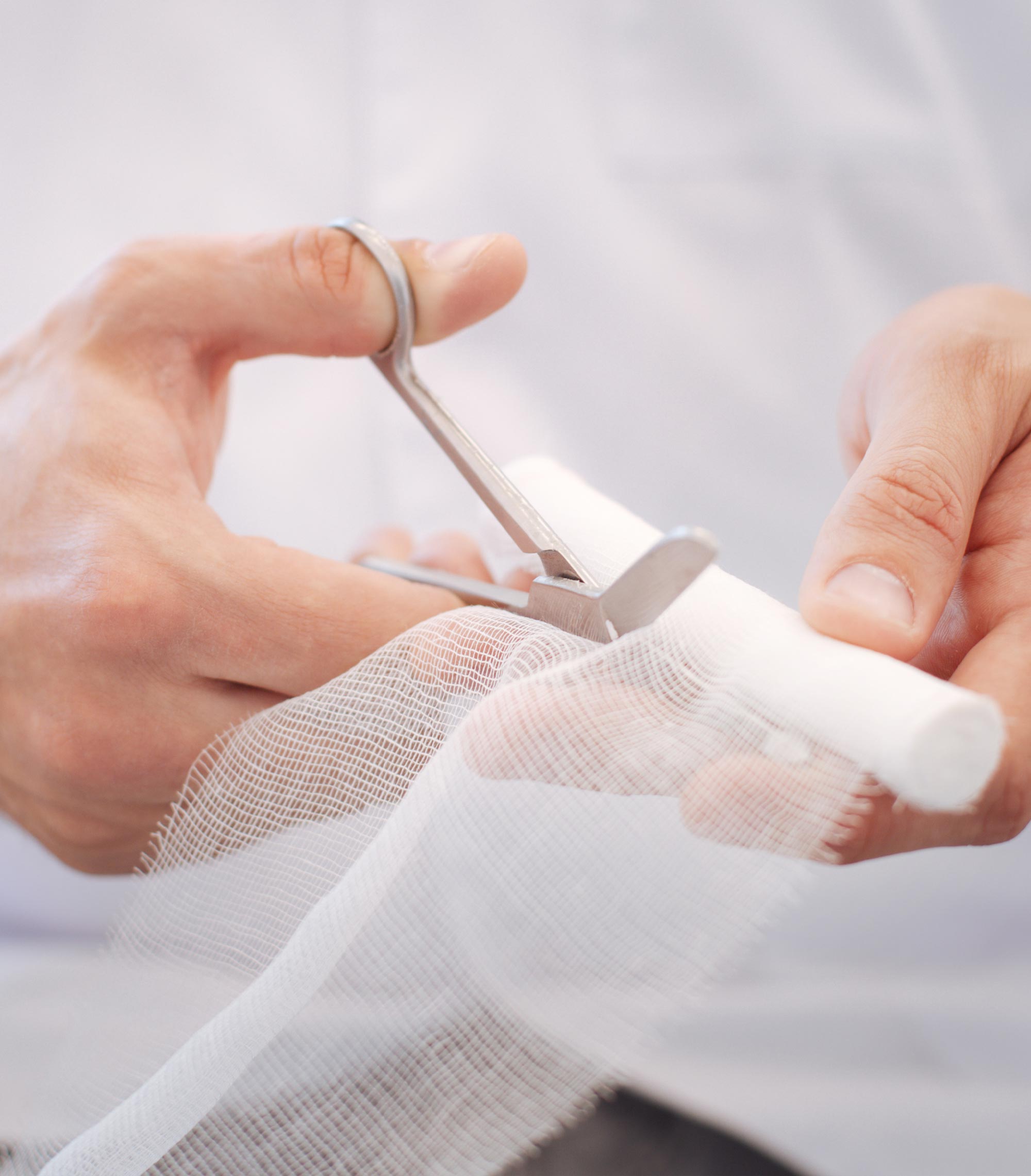Treatment
Treatment Options

Chronic Wound Treatments
The approach to treating each type of wound may vary based on factors such as size, depth, location, and the overall health of the individual. The DV Professional Group wound healing team plays a crucial role in assessing, treating, and managing these diverse types of wounds.
Wounds can be categorized based on various criteria, including the cause, depth, and healing characteristics. Below are the common types of wounds:
Common Treatment Options for Chronic Wound
It’s important for healthcare professionals to assess each patient’s unique situation and tailor the treatment plan accordingly.
Wound Debridement
Removal of dead or necrotic tissue from the wound bed is crucial for promoting healing. Debridement can be achieved through various methods, including sharp debridement, enzymatic debridement, autolytic debridement, and mechanical debridement.
Moist Wound Healing
Maintaining a moist wound environment has been shown to facilitate the healing process. Moist dressings, such as hydrocolloids, hydrogels, and foams, help create an optimal environment for cell proliferation and tissue repair.
Advanced Dressings
Depending on the wound characteristics, advanced dressings may be used. Examples include alginate dressings for exudative wounds, silver-containing dressings for infection control, and collagen dressings to promote tissue growth.
Negative Pressure Wound Therapy (NPWT)
NPWT involves the application of a vacuum dressing to promote wound healing by reducing edema, increasing blood flow, and promoting the removal of excess exudate.
Hyperbaric Oxygen Therapy (HBOT)
HBOT involves exposing the patient to high levels of oxygen in a pressurized chamber. This can enhance oxygen delivery to the wound, stimulate angiogenesis, and promote tissue healing.
Bioengineered Skin Substitutes
These are cellular or acellular products designed to replace or augment damaged skin tissue. They may contain living cells or provide a scaffold for tissue regeneration.
Topical Antibiotics or Antiseptics
In cases of infected wounds, topical antibiotics or antiseptics may be prescribed to control bacterial growth and prevent further complications.
Growth Factors and Cytokines
Growth factors, such as platelet-derived growth factor (PDGF) and vascular endothelial growth factor (VEGF), can be applied to the wound to stimulate cell proliferation and angiogenesis.
Cellular and Tissue-Based Products (CTPs)
CTPs, including skin grafts, amniotic membrane products, and others, may be used to promote tissue repair and regeneration.
Innovative Treatment Technology
The team at DV PRO collaborates with multiple wound-based vendors to assist in developing advanced wound care products, fostering continuous improvement in wound healing delivery.
Our wound care specialists, armed with evidence-based treatments and cutting-edge tools, are dedicated to restoring patient mobility and enhancing their quality of life.
Treatments in several sizes, allowing it to be used in a wide variety of wound procedures
Access to Placental-derived medical device cleared by the FDA for wound management
Treatments for chronic wounds that fail to heal after a month of cleaning, treating and dressing

